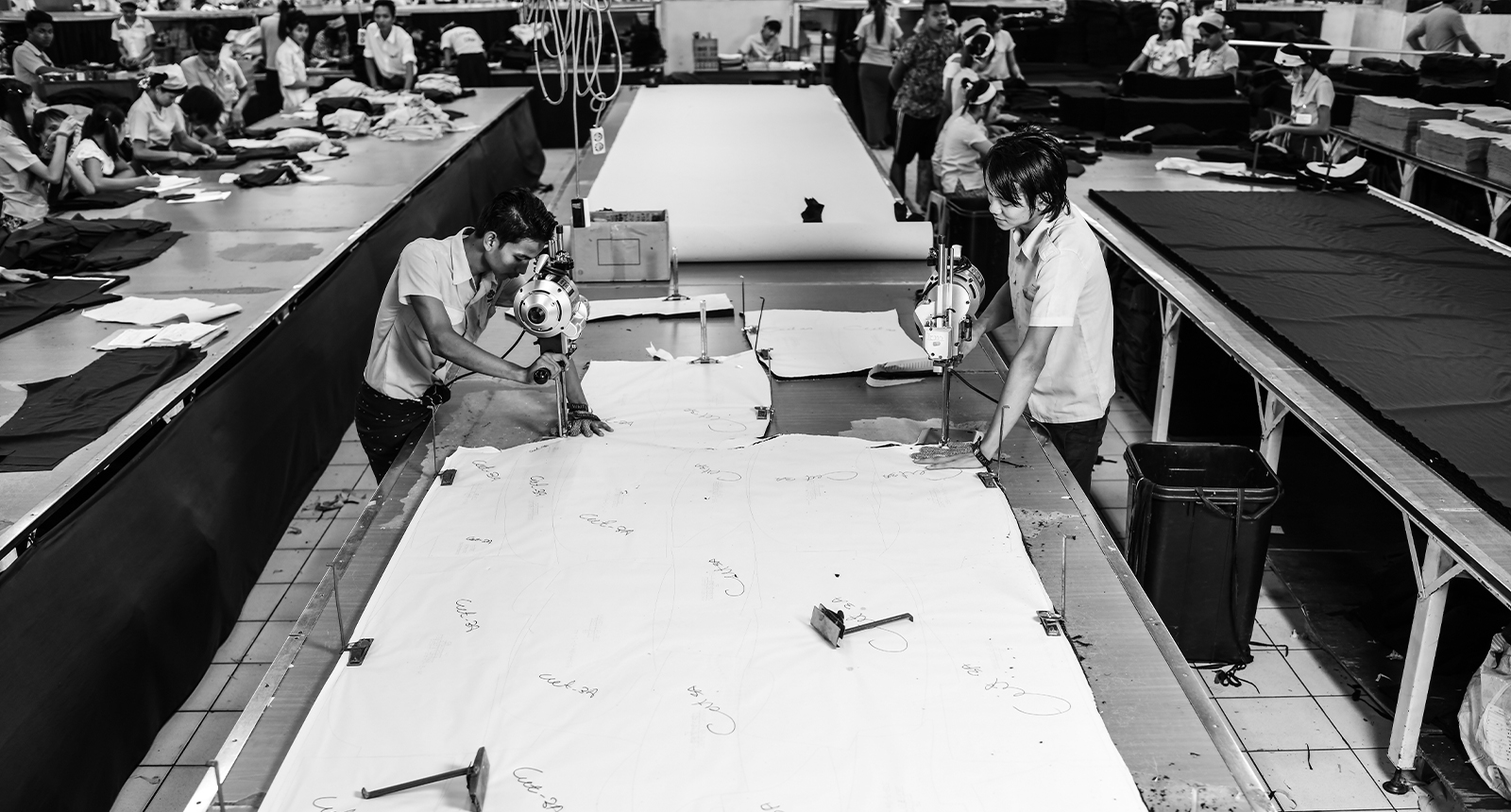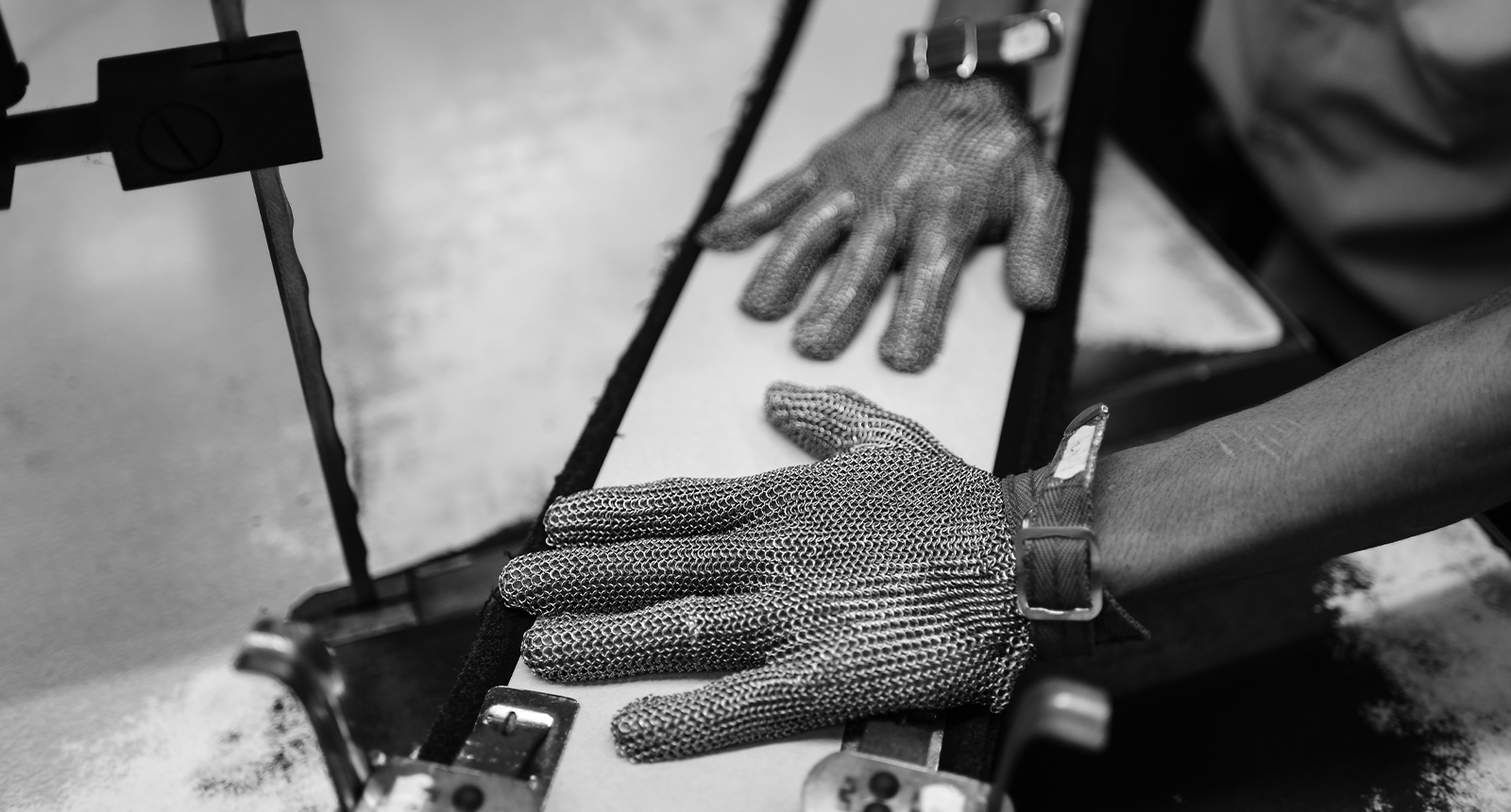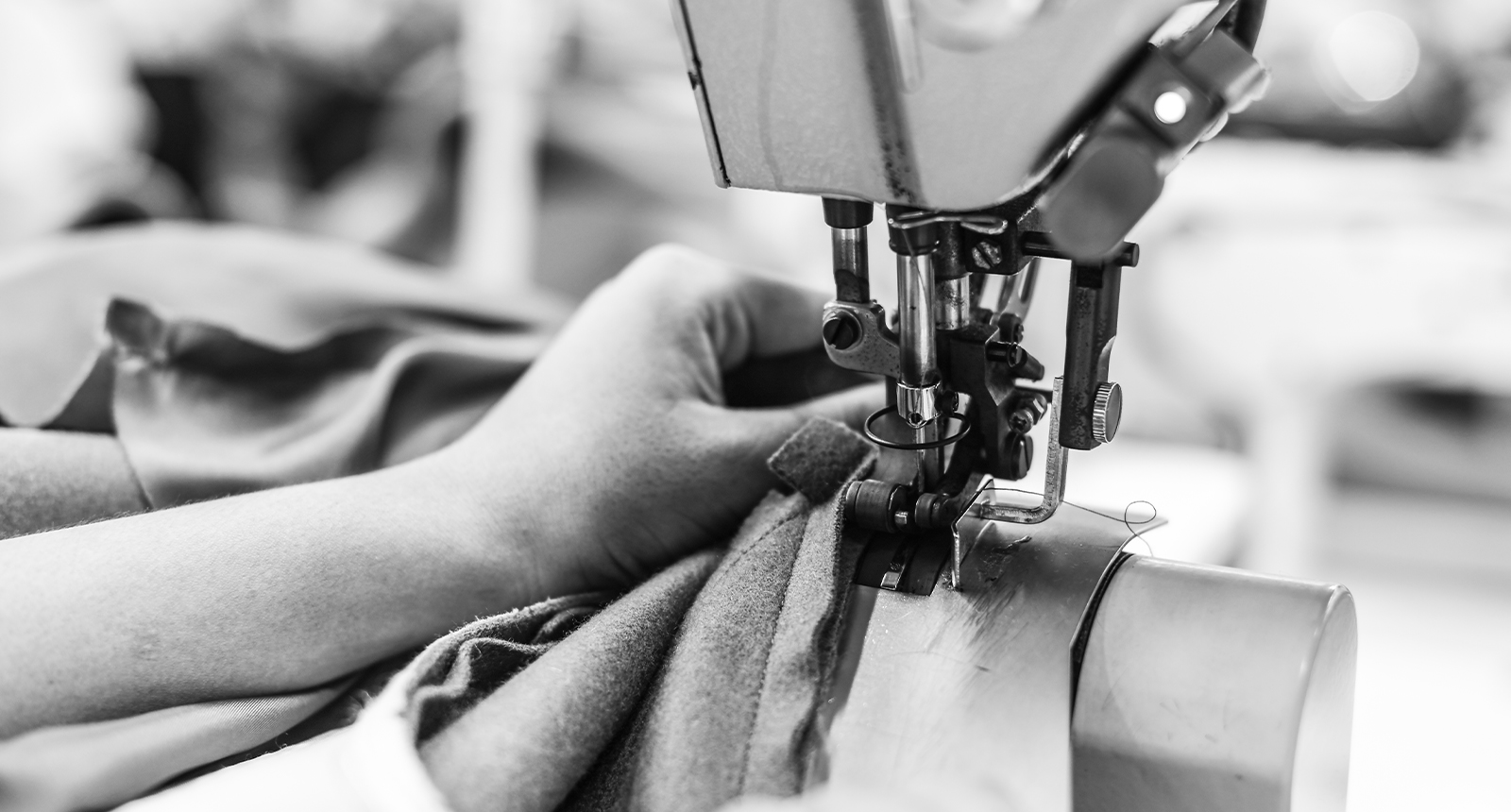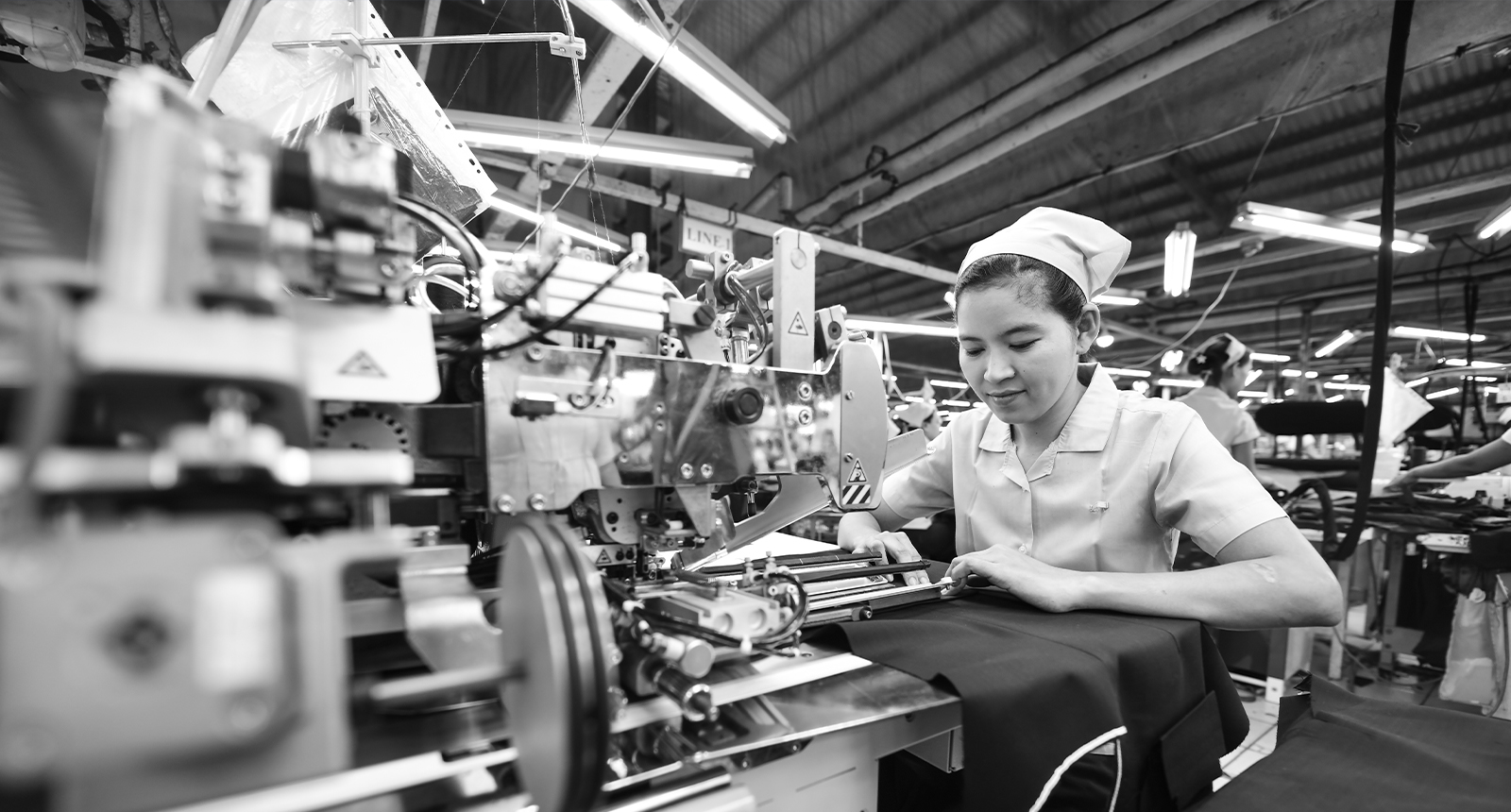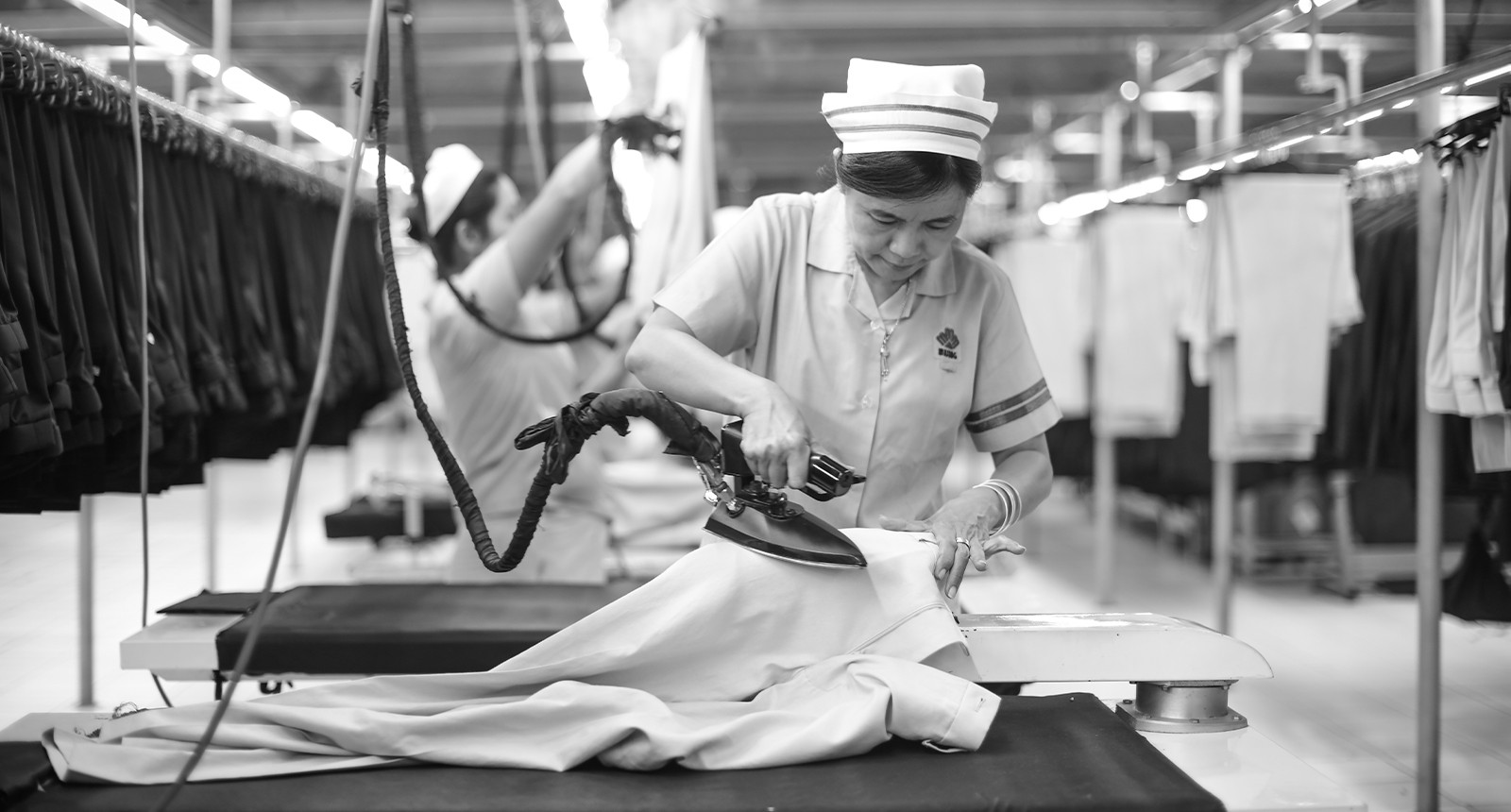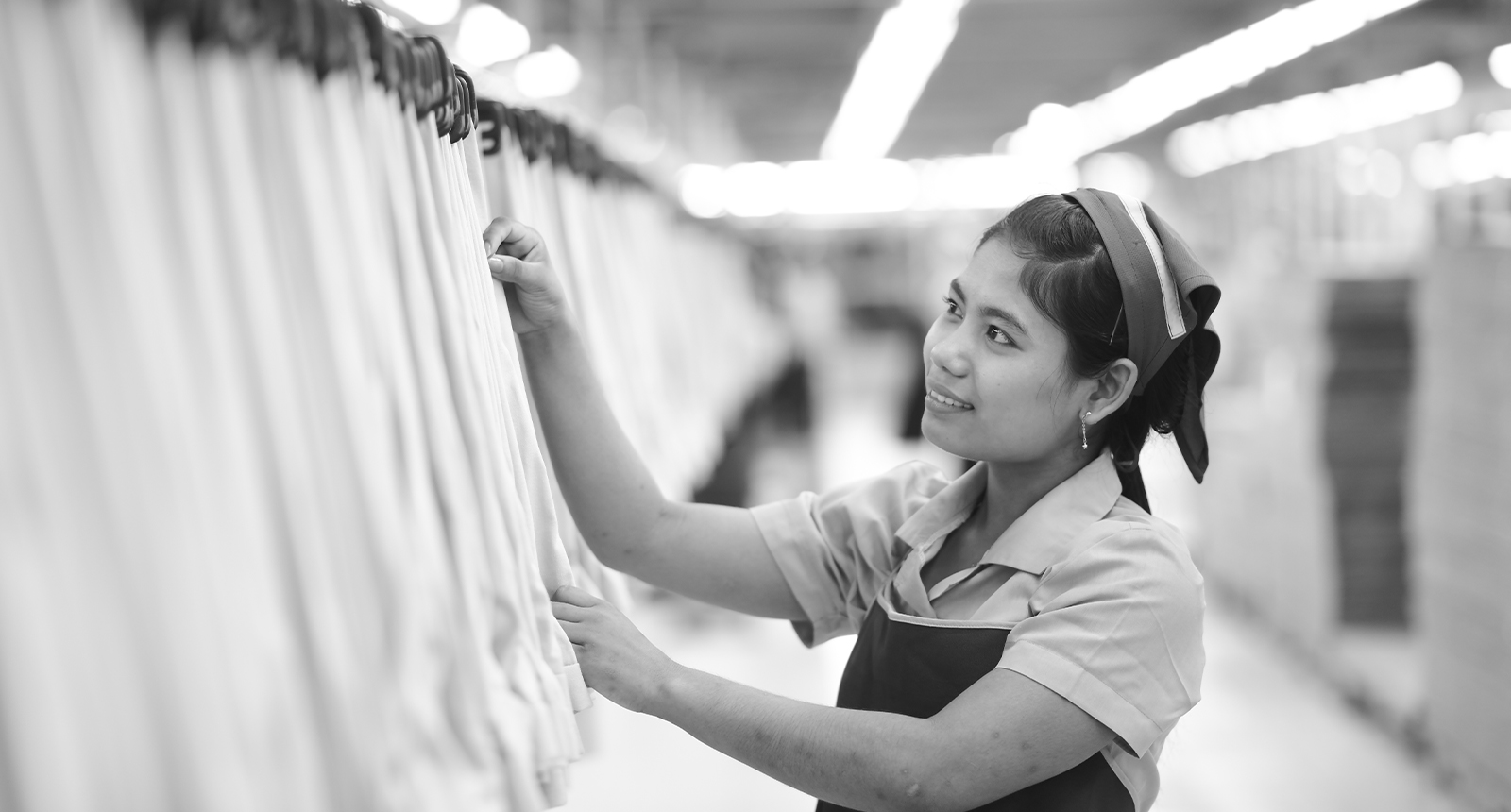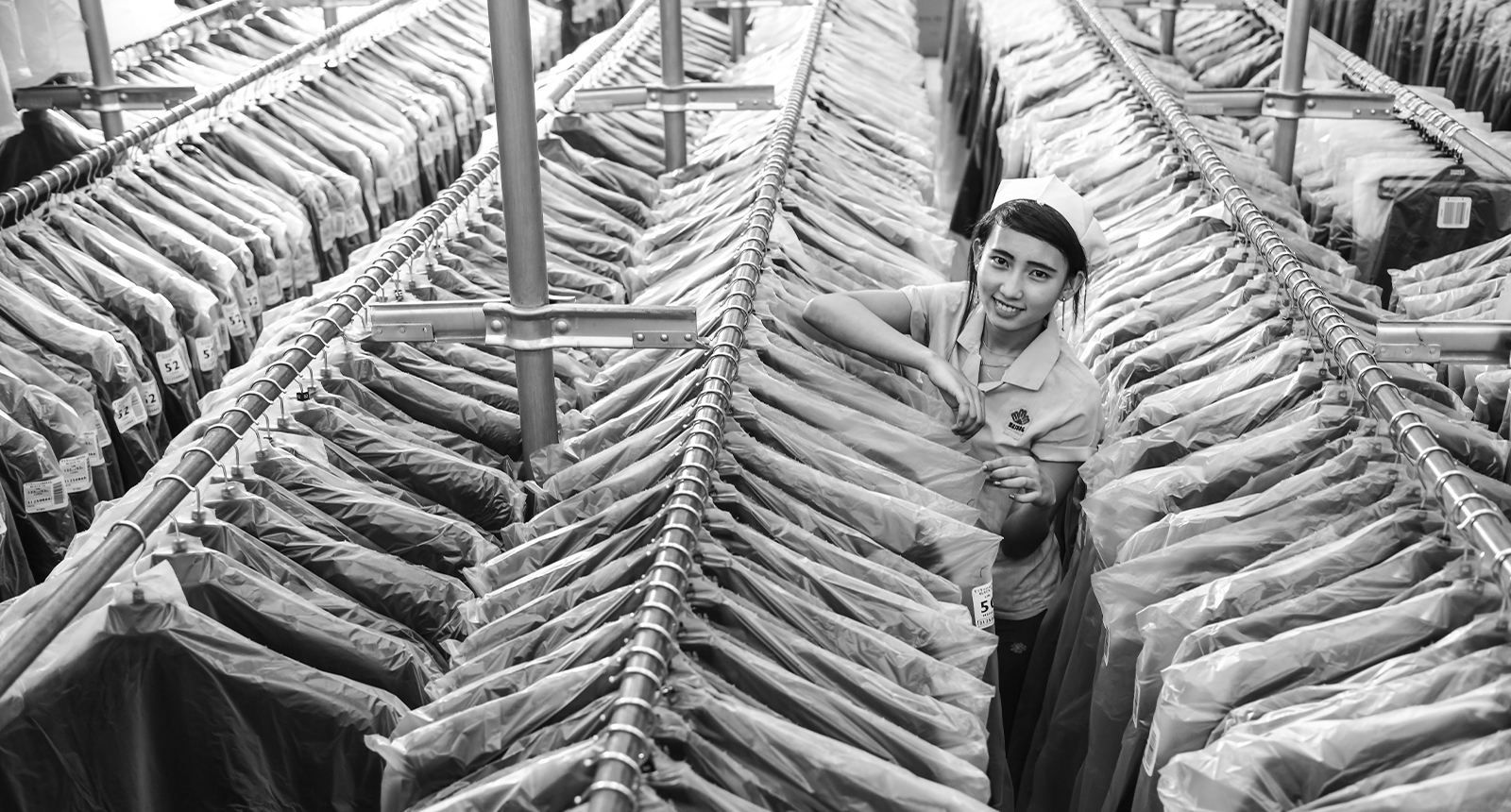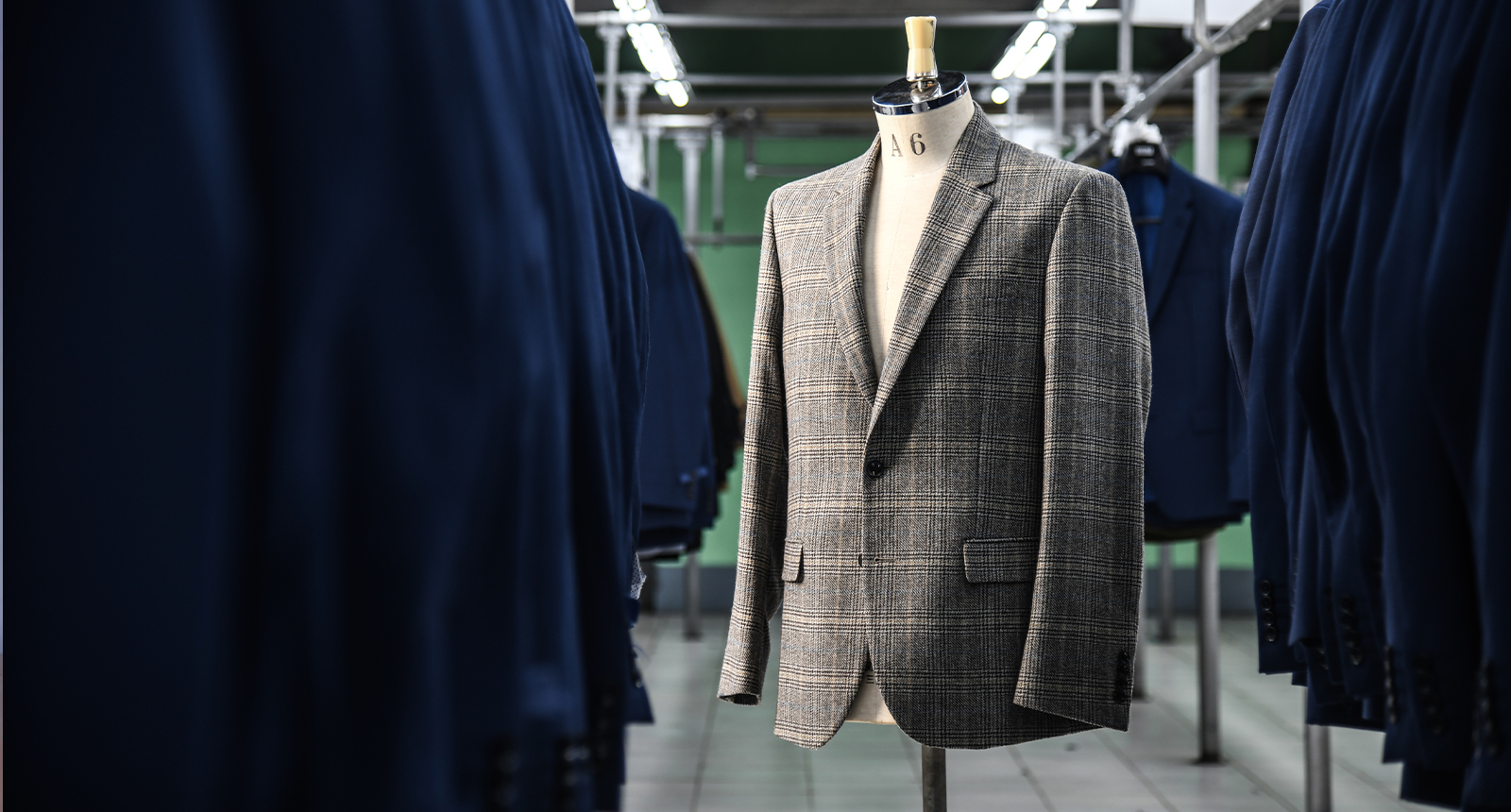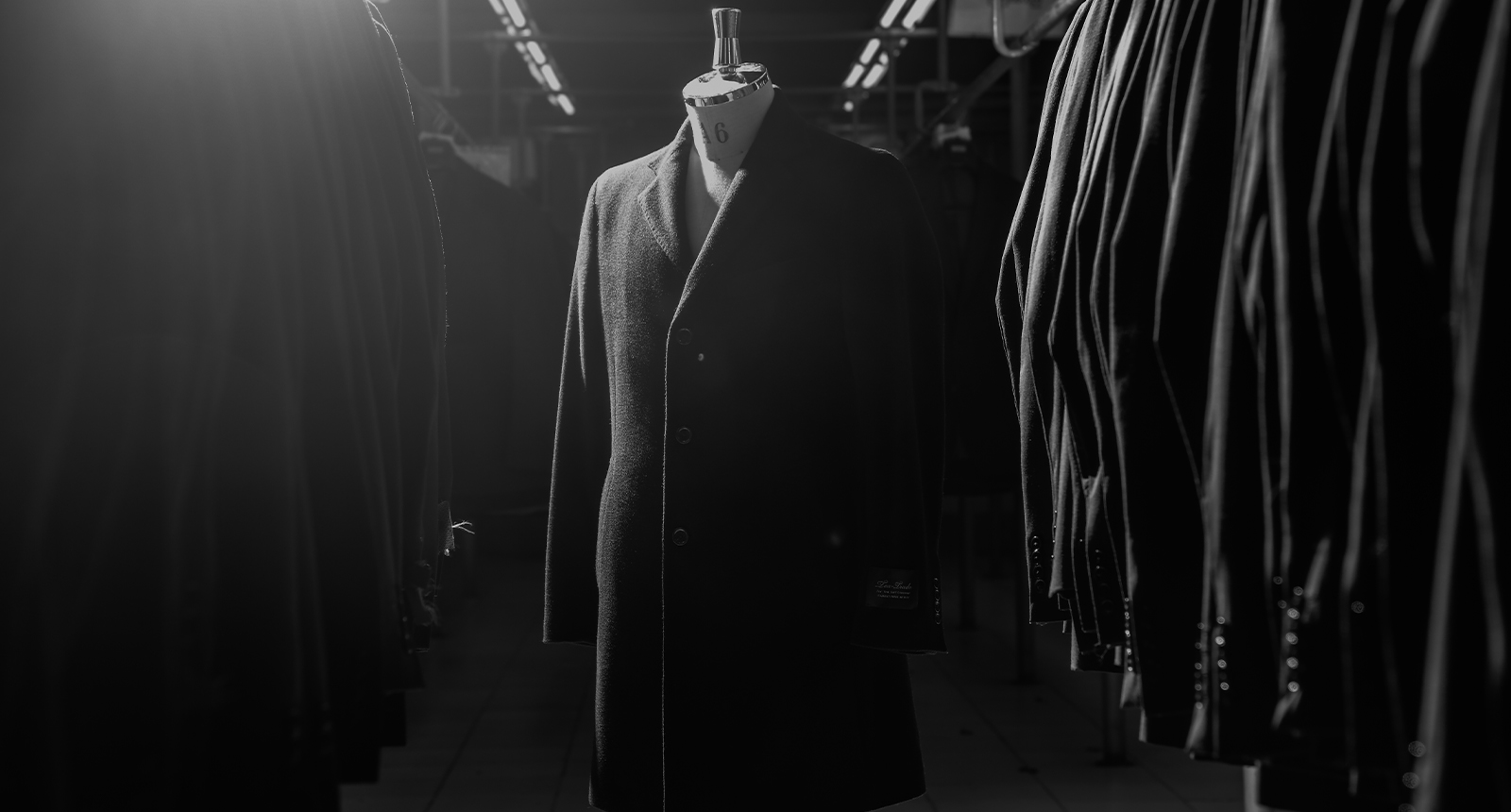MUSUNG Garment
Gallery
Find us on social media
Pattern
The appearance and fit of a garment are highly dependent on each process. Patternmaking is one of the earliest steps in the development of a garment. It is a craft that has evolved over the centuries into a skilled technical process. Today, patternmaking tools have been carefully tailored to quickly perform repetitive time-consuming tasks, allowing apparel companies to cater to the fast-paced world of fashion. Nowadays sophisticated software programs are used for pattern making.
Cutting
In most circumstances (except one-piece knitted garments), garments are assembled from several components. This is essential to establish profile / shape to the garments, to overcome the constraints of fabric width. The cutting is the process of re-production of shape of pattern pieces in the fabric during the production of garments. The cut fabric panels are then joined using a series of stitches and seams to produce three-dimensional garments.
Band Knife
Band knife machines provide the most accurate cutting and are therefore used in cutting small and complex shape components. The fabric plies are guided against the cutting device which is fixed and performs only a vertical movement down to the fabric. Because the band knife moves in only down direction, the friction between the knife and the material ensures the continuous compression of fabric plies throughout the process. Band knife machines may be used to cut fabric spreads up to 300 mm high.
Sewing
Sewing is an important department in garments manufacturing industry. All the parts of a garment are joined here by making stitch with the help of needle and thread. Where, sewing process flow chart helps to make a complete garment easily. By maintaining sewing process flow chart, an order can be completed in timely.
Wettting
Wet cleaning is a term used to define alternative to dry cleaning techniques. They involve the immersion of a garment in water with detergents and other additives. The process is identical to the one followed in traditional home washing machines, but in modern industrial applications it is much milder and gentler. Thus wet cleaning can be used for delicate garments that would normally require dry cleaning
Ironing
Pressing or ironing is the most important finishing process in readymade garments sector which is done by subjecting a cloth to heat and pressure with or without steam to remove unwanted creases and to impart a flat a appearance to the garments. Pressing or ironing also done to introduce creases in the apparel. In the garments manufacturing industries, pressing is termed as ironing.
Inspection
Inspections are commonplace among most product categories. But they’re especially important when manufacturing garments, as manual production processes often result in products that are more prone to human errors and mistakes. These steps to garment inspection convey the essential basics of quality control inspection for garments.
Assortment and packing
Garment packaging is the process of wrapping, compressing, filling or creating of goods for the purpose of protection and their appropriate handling. This is the final process in the production of garments, which prepares the finished merchandise for delivery to the customer. It is an important part of the garment manufacturing process. Garment packaging is also use to get lot of attention from the customer.


